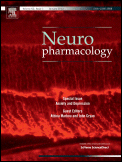
“Extravirgin olive oil (EVOO) represents the typical lipid source of the Mediterranean diet, an eating habit pattern that has been associated with a significant reduction of cancer risk. Diet is the more studied environmental factor in epigenetics, and many evidences suggest dysregulation of epigenetic pathways in cancer.
The aim of our study was to investigate the effects of EVOO and its phenolic compounds on endocannabinoid system (ECS) gene expression via epigenetic regulation in both human colon cancer cells (Caco-2) and rats exposed to short- and long-term dietary EVOO.
Taken together, our findings demonstrating CB₁ gene expression modulation by EVOO or its phenolic compounds via epigenetic mechanism, both in vitro and in vivo, may provide a new therapeutic avenue for treatment and/or prevention of colon cancer.”









